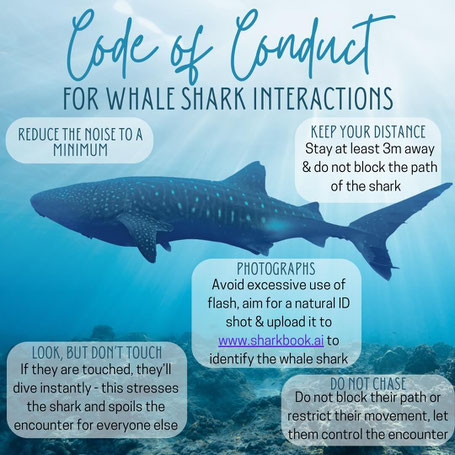Why Responsible Whale Shark Tourism Matters
Few underwater experiences compare to the awe of swimming alongside a gentle giant—the whale shark. As the largest fish in the ocean, whale sharks are mesmerizing creatures, often reaching lengths of over 16 meters (52 feet). Despite their size, they are filter feeders and pose no threat to humans, making them a bucket-list encounter for many divers and snorkelers alike.
However, responsible interactions with whale sharks are crucial to their conservation. Unsustainable tourism can disrupt their natural behavior, stress individuals, and lead to population declines. Below, we highlight the best destinations to see these magnificent creatures while ensuring that encounters are sustainable and eco-friendly.


1. Galapagos Islands, Ecuador – The Ultimate Whale Shark Diving Destination
If you’re looking for one of the most scientifically significant places to dive with whale sharks, the Galapagos Islands are an unbeatable choice. The remote northern dive sites of Wolf and Darwin Islands are known for attracting large, pregnant female whale sharks, a phenomenon still being studied by researchers.
- Best Time to Visit: June to November
- Diving or Snorkeling? Diving only (deep, strong currents)
- Why It’s Special: Encounters with massive whale sharks, often over 10 meters (32 feet) in length, as part of their mysterious migration path.
Diving in the Galapagos Marine Reserve is highly regulated, with strict conservation guidelines in place. Operators like Galapagos Shark Diving run Citizen Science Expeditions, allowing divers to collect identification photos and contribute to ongoing whale shark research with the Galapagos Whale Shark Project.
2. Ningaloo Reef, Australia – A World-Class Snorkeling Experience
The Ningaloo Reef is one of the most famous places to snorkel with whale sharks in their natural habitat. The clear waters and proximity to shore make it an accessible and well-regulated experience.
- Best Time to Visit: March to July
- Diving or Snorkeling? Snorkeling only (diving with whale sharks is not permitted here)
- Why It’s Special: Whale sharks frequently feed near the surface, providing excellent visibility and long interactions.
Australia has some of the strictest guidelines for whale shark encounters, including limited group sizes, time restrictions, and a no-touch policy to minimize stress on the animals.
3. Isla Mujeres & La Paz, Mexico – A Popular Destination with Responsible Options
Isla Mujeres and La Paz are two of the most popular locations in Mexico for encountering whale sharks, with peak aggregations of individuals feeding in warm waters.
- Best Time to Visit: May to September (Isla Mujeres), October to February (La Paz)
- Diving or Snorkeling? Snorkeling only (diving with whale sharks is not allowed in Mexico)
- Why It’s Special: One of the largest seasonal aggregations of whale sharks in the world.
While Mexico is a great destination, many operators do not follow responsible tourism practices, leading to overcrowding and stress on the whale sharks. It is crucial to choose responsible and certified eco-tourism operators that enforce no touching, no crowding, and limited boat numbers per shark. Cabo Trek in Cabo San Lucas has been recognized as the first and only ecotourism company in Mexico to obtain the official recognition of Responsible Whale Watching Operator assigned by the World Cetacean Alliance.
4. Donsol Bay, Philippines – A Developing Ethical Whale Shark Tourism Destination
Donsol Bay is one of the most responsible locations for whale shark interactions, with strict guidelines enforced by WWF to prevent stress on the animals.
- Best Time to Visit: November to June (Peak season: February to April)
- Diving or Snorkeling? Snorkeling only (diving is not permitted with whale sharks here)
- Why It’s Special: A natural feeding area where whale sharks gather without human interference.
However, as in Mexico, not all operators follow responsible tourism standards. Some areas in the Philippines engage in harmful feeding practices that alter whale shark behavior and create dependency. Donsol is an exception, where strict no-feeding policies, limits on the number of swimmers per shark, and trained guides ensure that encounters remain natural and non-invasive. Always research and select an operator that adheres to these ethical standards.
5. South Ari Atoll, Maldives – A Year-Round Destination
The Maldives' South Ari Atoll is home to resident whale sharks, making it one of the only destinations where divers and snorkelers have a good chance of seeing them throughout the year.
- Best Time to Visit: Year-round (best sightings in August to November)
- Diving or Snorkeling? Both (whale sharks are spotted at deeper sites for divers and near the surface for snorkelers)
- Why It’s Special: High probability of sightings, especially in South Ari Atoll.
The Maldives Whale Shark Research Program (MWSRP) works closely with local dive operators to monitor and protect the population while promoting sustainable tourism.
How to Dive Responsibly with Whale Sharks
While seeing a whale shark is an unforgettable experience, how we interact with them matters. Here are the key principles of responsible whale shark encounters:
✅ Respect Their Space – Maintain a minimum distance of 3m from the side, 5m from the head, and 4m from the tail to avoid disrupting their natural movement.
✅ Approach Laterally – Never block the whale shark’s path; always approach from the side rather than head-on.
✅ No Touching, Chasing, or Riding – Avoid any action that may stress or harm the shark. Never attempt to grab, hold onto, or ride a whale shark.
✅ Avoid Excessive Use of Flash Photography – Bright lights can startle and disturb whale sharks, altering their behavior.
✅ No Motorized Propulsion – Do not use dive scooters, jet skis, or motorized aids near the sharks to prevent accidental injuries and disturbance.
✅ Limit Group Sizes – Choose operators that restrict the number of people per encounter to reduce stress on the animals.
✅ Support Research & Conservation – Dive with operators that contribute to scientific studies and conservation efforts, such as Galapagos Shark Diving’s Citizen Science Expeditions.


Plan Your Responsible Whale Shark Adventure
Whether you’re diving in the Galapagos, snorkeling in Ningaloo Reef, or exploring the waters of the Maldives, encountering a whale shark is a once-in-a-lifetime experience. By choosing sustainable operators and following responsible guidelines, you help ensure the protection of these gentle giants for generations to come.
For an eco-conscious diving adventure where you can contribute to real whale shark research, consider joining a Citizen Science Expedition with Galapagos Shark Diving.
For more information, visit www.galapagossharkdiving.com or contact us at info@galapagossharkdiving.com.
Swim responsibly and protect our oceans!










Write a comment